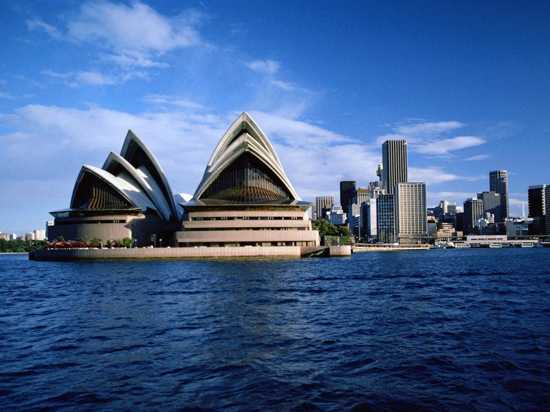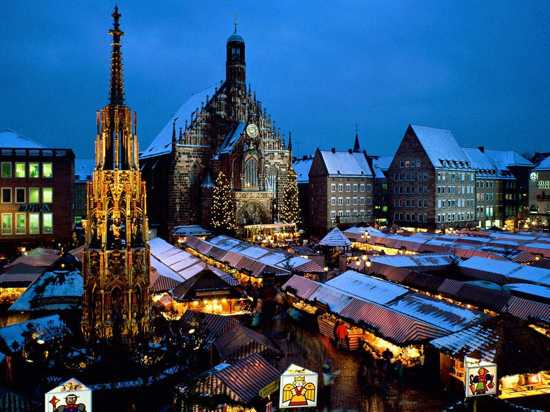 Mysteries
Mysteries  Mysteries
Mysteries  History
History 10 Surprising Stories About the Texas Rangers
 Humans
Humans 10 Philosophers Who Were Driven Mad by Their Own Theories
 Miscellaneous
Miscellaneous 10 Video-Game-Worthy Weapons and Armors from History
 Weird Stuff
Weird Stuff 10 Psychics Who Accurately Predicted Wartime Events
 The Arts
The Arts 10 Pieces of Art Inspired by a Broken Heart
 Health
Health 10 Science Fiction-Sounding New Medical Treatments
 History
History 10 Surprising Facts About the Father of Submarine Warfare
 Space
Space Ten Astonishing New Insights into Alien Worlds
 Weird Stuff
Weird Stuff 10 Bizarre Summer Solstice Rituals Still Practiced Today
 Mysteries
Mysteries Top 10 Haunting Facts About the Ghost Ship MV Alta
 History
History 10 Surprising Stories About the Texas Rangers
 Humans
Humans 10 Philosophers Who Were Driven Mad by Their Own Theories
Who's Behind Listverse?

Jamie Frater
Head Editor
Jamie founded Listverse due to an insatiable desire to share fascinating, obscure, and bizarre facts. He has been a guest speaker on numerous national radio and television stations and is a five time published author.
More About Us Miscellaneous
Miscellaneous 10 Video-Game-Worthy Weapons and Armors from History
 Weird Stuff
Weird Stuff 10 Psychics Who Accurately Predicted Wartime Events
 The Arts
The Arts 10 Pieces of Art Inspired by a Broken Heart
 Health
Health 10 Science Fiction-Sounding New Medical Treatments
 History
History 10 Surprising Facts About the Father of Submarine Warfare
 Space
Space Ten Astonishing New Insights into Alien Worlds
 Weird Stuff
Weird Stuff 10 Bizarre Summer Solstice Rituals Still Practiced Today
Top 10 Highly Developed Countries
The Human Development Index (HDI) is a composite statistic used to rank countries according to their development levels from “very high” to “low.” Countries are ranked based on life expectancy, education, the standard of living, child welfare, health care, economic welfare, and population happiness. Formulas are used to factor all the variables and determine the scores of countries. Critics have cited the HDI as inaccurate or vague, but coming up with the top ten highly developed countries list, in my own opinion, would have been very subjective and probably badly ranked. Thus, I have simply listed the first ten countries on the HDI and displayed their scores while providing explanations. Enjoy.
[NOTE: Updated for 2020 Report]
10 Denmark
Score: 0.940

The Kingdom of Denmark is a country that comprises Denmark proper in Northern Europe and two autonomous constituents—the Faroe Islands and Greenland—in the North Atlantic Ocean. The population of Denmark is around 5.66 million inhabitants. Denmark is a constitutional monarchy where the Danish monarch, the formal head of state, retains only ceremonial functions, the most significant of which is to appoint the Prime Minister and the Cabinet Ministers, who are responsible for the administration of the government. A developed country, Danes enjoy a high standard of living, and the country ranks highly in some metrics of national performance, including education, health care, protection of civil liberties, democratic governance, and LGBT equality. They enjoy a life ex[ectancy of 80.7 years. Denmark is consistently ranked as one of the happiest countries in the world in cross-national studies of happiness (they ranked 2nd on the 2020 World Happiness Report). The GDP of Denmark was US$350 billion in 2019, with a GDP per capita at US$60,170.

Also known as the United Netherlands or Holland, the Netherlands is a constitutional monarchy and a representative democracy. The Netherlands has very high educational and literacy standards while having low poverty and unemployment rates and is led by its Prime Minister, Mark Rutte. Throughout its history, the Netherlands was one of the key founders of the EU, NATO, OECD, AND WTO and is called the “world’s legal capital,” hosting five international court systems. The country’s GDP is US$907 billion and has a GDP per capita of US$52,331. In 2020, the Netherlands ‘ 17.1 million people were ranked as the 5th happiest in the world, with a stable economy, guileless government, low taxes, beautiful cities such as the capital of Amsterdam, and a healthy life expectancy of 81.8 years.

Officially the Commonwealth of Australia, this island/continent has the world’s 12th largest economy, with a GDP of US$1.379 trillion and a GDP per capita of US$55,060. Australia is a federal parliamentary constitutional monarchy with some of the highest rankings in the world in the categories of quality of life (the people are very happy), health, education (nearly a 100% literacy rate and extremely high percentages of enrollment and college graduates), economic freedom, and finally civil liberties and protection of human rights. The 25.36 million inhabitants enjoy a country striving for a stable government, content citizens, peace and sustainability, protection of wildlife and biodiversity (Australia has a lot of), and a life expectancy of 82.8 years. Of course, Australia is a fantastic place to visit and experience its rustic wildlife and beautiful cities such as Sydney.

The socialist and largely liberal European country of Sweden (officially the Kingdom of Sweden) is led by a prime minister and is about the size of the U.S. state of California (or Spain if unfamiliar with CA) and has an approximate population of 10.2 million with the capital and largest city being Stockholm. The Swedish people are often rated as one of the happiest in the world and have high marks in income (US$51,615 GDP per capita, and a regular GDP of US$531 billion), life expectancy (82.6 years), and education. In addition, the country has very low unemployment and poverty rates, has equal and free access to health care, and has been one of the most active supporters of environmental sustainability today and pushes for other countries to “Go green.” Sweden also serves as a major tourist destination for millions of international travelers, as the country has a long and rich history.
See the sights of one of the planet’s most beautiful countries! Buy Lonely Planet’s Sweden Travel Guide at Amazon.com!

The Federal Republic of Germany, or Germany, has the largest economy in the European Union and one of the largest populations at 83.0 million and its bustling capital and economic center of Berlin. Chancellor Angela Merkel is the head of a government with a people of very high education standards, with a nearly 100% attendance rate and 99% literacy rate. Germany thrives in industry and manufacturing and is a major exporter of electrical and engineering products, such as cars (Volkswagen anyone?), and are renowned globally for their skilled workforce. The GDP is US$3.86 trillion, and GDP per capita is US$46,445, and poverty rates are low, although the unemployment rate is about 7%. Like Sweden, Germany is a prime tourist destination for its historic beauty, and the wonderful people (aside from Adolf and the Nazis back in the 1930-40s) have a life expectancy of 80.9 years.

Iceland is a Nordic island country in the North Atlantic Ocean and the most sparsely populated country in Europe. The capital and largest city is Reykjavík. Reykjavík and the surrounding areas in the southwest of the country are home to over two-thirds of the population (356,991). Iceland is volcanically and geologically active. Iceland has a market economy with relatively low taxes, compared to other OECD countries, and the highest trade union membership in the world. It maintains a Nordic social welfare system that provides universal health care and tertiary education for its citizens, ensuring a high life expectancy (82.9 years). Iceland ranks high in economic, democratic, and social stability, as well as equality, ranking sixth in the world by GDP per capita (US$66,944), with an annual GDP of US$24.2 billion.

Hong Kong, officially the Hong Kong Special Administrative Region of the People’s Republic of China (HKSAR), is a metropolitan area and special administrative region of China on the eastern Pearl River Delta in South China. With over 7.5 million residents of various nationalities in a 1,104-square-kilometer (426 sq mi) territory, Hong Kong is one of the most densely populated places in the world. As one of China’s two special administrative regions (the other being Macau), Hong Kong maintains separate governing and economic systems from mainland China under the principle of “one country, two systems.” Originally a sparsely populated area of farming and fishing villages, the territory has become one of the world’s most significant financial centers and commercial ports. It is the world’s tenth-largest exporter and ninth-largest importer. Hong Kong has a major capitalist service economy characterized by low taxation and free trade, and its currency, the Hong Kong dollar, is the eighth most traded currency in the world. Hong Kong is home to the second-highest number of billionaires of any city in the world, the highest number of billionaires of any city in Asia, and the largest concentration of ultra-high-net-worth individuals of any city in the world. The city has a GDP per capita income of US$48,713 and a GDP of $265.7. Although there is tremendous wealth, there remains severe income inequality exists among the population of 7.51 million people. It also has the largest number of skyscrapers of any city in the world, and its residents have some of the highest life expectancies at 94.9 years.

Switzerland, officially the Swiss Confederation, is a landlocked country situated at the confluence of Western, Central, and Southern Europe. It is a federal republic composed of 26 cantons, with federal authorities based in Bern. It is geographically divided among the Swiss Plateau, the Alps, and the Jura, spanning 41,285 km2 (15,940 sq mi) and a land area of 39,997 km2 (15,443 sq mi). Although the Alps occupy the greater part of the territory, the Swiss population is concentrated mostly on the plateau, where the largest cities and economic centers are located, among them Zürich, Geneva, and Basel. These cities are home to several offices of international organizations such as the WTO, the WHO, the ILO, the headquarters of FIFA, the UN’s second-largest office, and the main building of the Bank for International Settlements. A developed country, it has the eighth-highest per capita GDP (US$81,993) with a national GDP of US$703 billion; it has also been considered a tax haven. It ranks highly on some international metrics, including economic competitiveness and human development. Its cities, such as Zürich, Geneva, and Basel, rank among the highest in terms of quality of life, albeit with some of the highest costs of living in the world. The 8.56 million Swiss people enjoy a life expectancy of 83.8 years.
Travel to Switzerland! Buy Lonely Planets Switzerland Travel Guide at Amazon.com!

The Republic of Ireland has a relatively small population of 4.9 million, is a parliamentary democracy, and its capital is Dublin. Ireland has a very high literacy rate of 99% and high education standards, and a strong life expectancy of 82.3 years. It also has a well-balanced infrastructure, with a GDP of US$476 billion and a GDP per capita rate of US$78,660. The country is ranked #7 for the press freedom, economic freedom, and political freedom it offers to the public. Ireland has rebounded from the global recession that began in 2008 when it experienced negative GDP and accumulated massive debt, rated as one of the five European “P.I.I.G.S.” (Portugal, Ireland, Italy, Greece, and Spain). They have since steadily enjoyed economic growth, jumping up the HDI scale to #2.

And #1, but barely, is Norway, or the Kingdom of Norway. This country of 5.3 million is a parliamentary constitutional monarchy with extremely high education standards and very low poverty and unemployment rate, with a life expectancy of 82.7 years. Norway was a pivotal founding member of NATO but rejected joining the EU but continues to have good relations with neighboring European countries. Norway is also a founding member and now a huge donator to the United Nations and helping found the Council of Europe, and is an active member of WTO and OECD. Norway has one of the largest reserves of petroleum, natural gas, minerals, lumber, seafood, freshwater, and hydro-power in the world and is a major exporter of oil. Its national GDP is US$403 billion with a per capita GDP of US$75,419. Norway is internationally recognized for its universal health care, advanced schooling systems, and distinguished social security system. For all these reasons, the Kingdom of Norway ranks number one on the United Nation’s Human Development Index.








